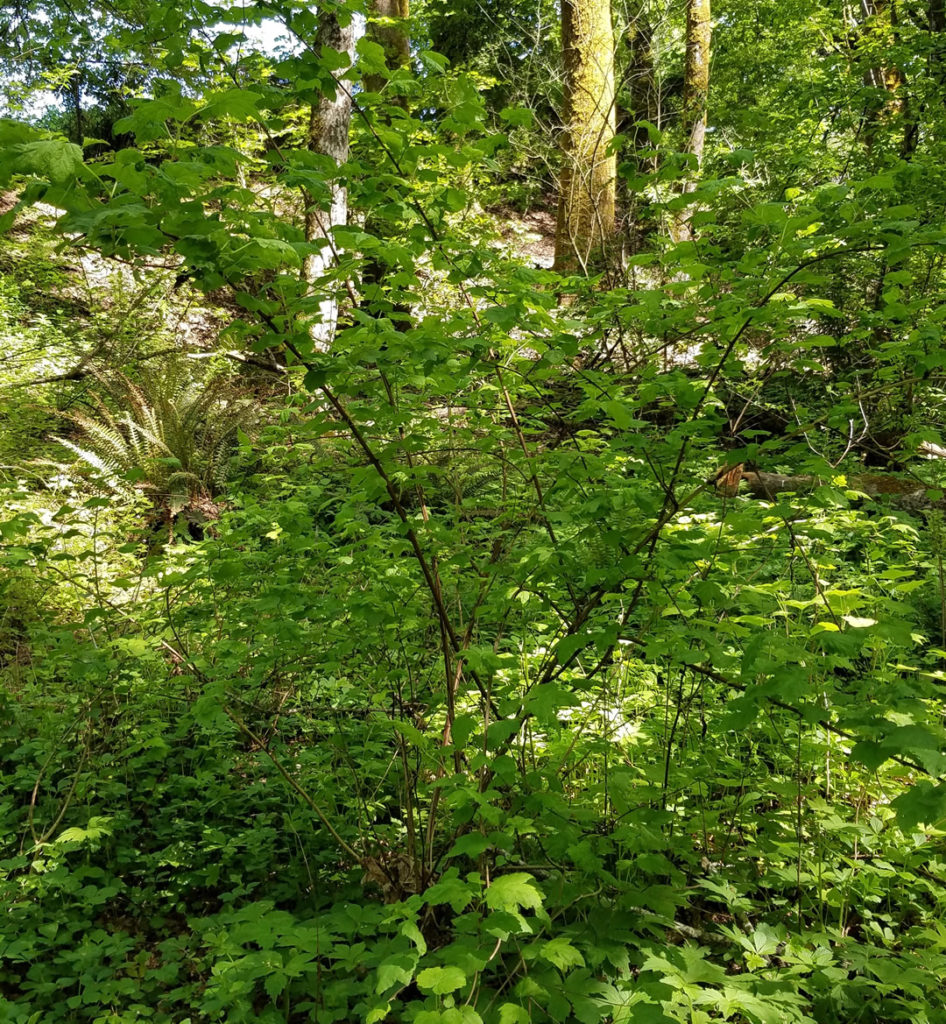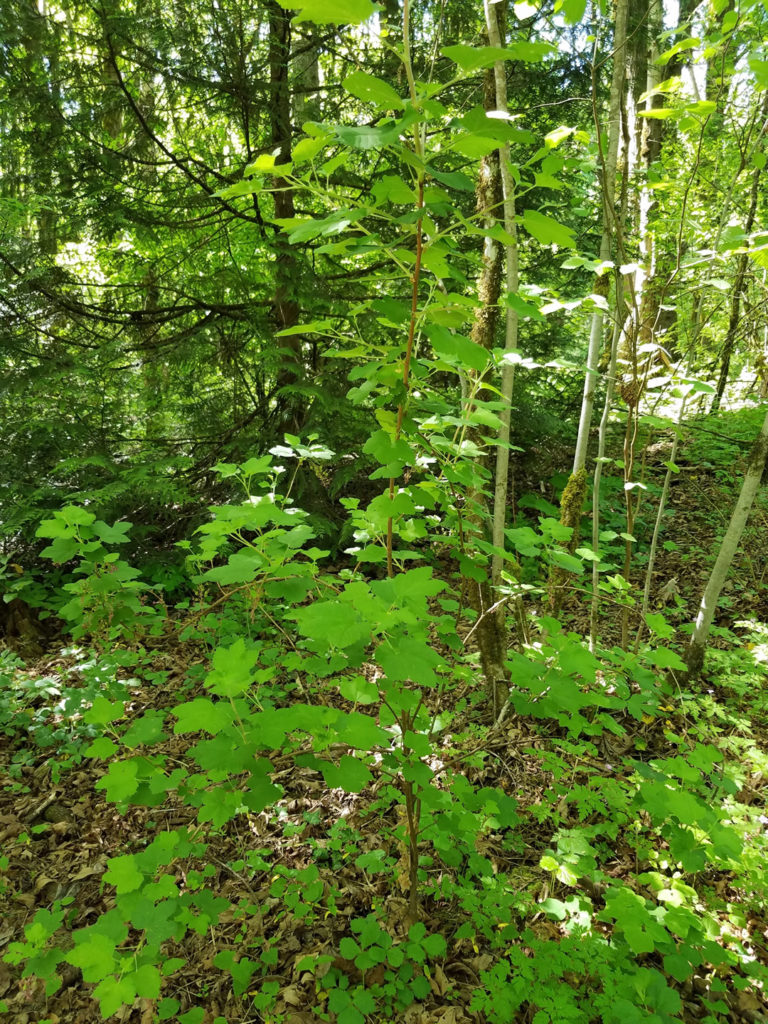

Red-flowering Currant, Ribes sanguineum
Grossulariaceae – Currant and gooseberry family
The genus takes its name from the Arabic name “ribas” for a rhubarb-like plant Reheum ribes. The racemes of red flowering currant may be blood red (“sanguineum”), but are usually of a more subdued shade. Currants and gooseberries are in the same genus, and are distinguished by the presence of thorns on gooseberries but not currants.
The thought of currants and gooseberries evokes images of a well-tended English garden with Peter Rabbit up to some mischievousness between tidy hedges. Yet Ribes is primarily of North American and Andean distribution. Our native red-flowering currant became a garden favorite in Europe upon its introduction by David Douglas in 1826. More than a century and a half later this beautiful and tame shrub, described by eminent botanist Lewis Clark as “one of the finest of all ornamental shrubs,” is still underappreciated here, its place of origin. Prior efforts to control the white pine blister rust, an introduced fungus with alternate life cycles between Ribes and commercial pines, led to the attempted eradication and perhaps undeservedly tarnished reputation of Ribes. Red-flowering currant has many upright stems three to ten feet high, with thin brown bark and alternate, deciduous leaves of three to five lobes. The flowers are borne in showy, pendulous racemes in spring, and develop into bluish-black berries that are palatable for birds but are not very palatable for humans (5-23).
Information courtesy of “The View From Springbrook Park; an Illustrated Natural History” by Ed Chinn.
Photos taken by Laura Tanz
Sponsored by Friends of Springbrook Park; Lake Oswego, OR